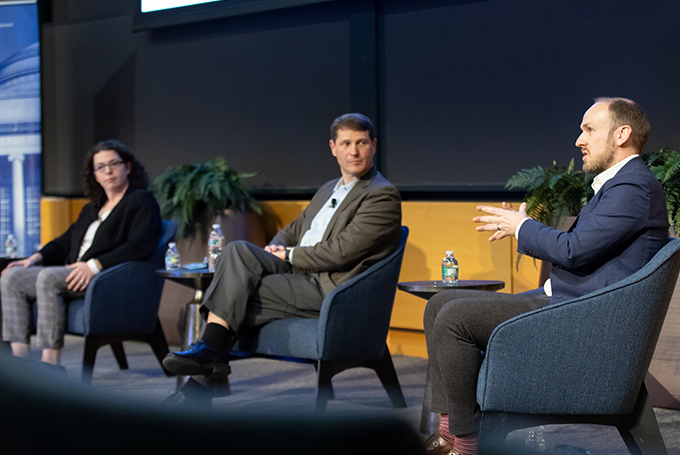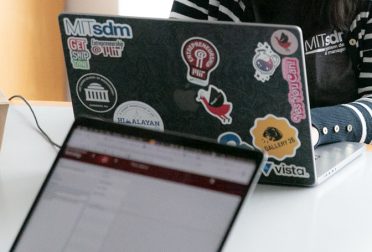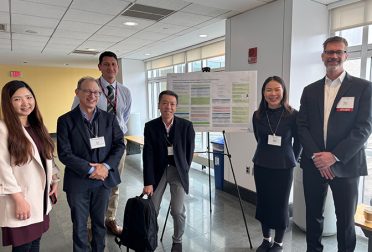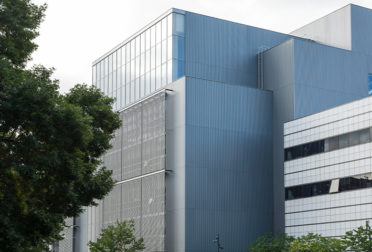“There is an art to being able to suss out the real needs” of an organization, according to Robert Plummer, chair of the Systems Engineering Board at Lawrence Livermore National Laboratories and SDM graduate certificate alum. Plummer spoke during a panel discussion on leading systems engineering teams at globally recognized organizations as part of System Design and Management’s Systems Night on November 16, 2023.
Since 2017, Systems Night has brought together current students, alumni, researchers, and industry partners for evenings of connection, education, and community building. Moderated by Dr. Afreen Siddiqi, a research scientist in MIT’s Aeronautics and Astronautics department, this evening’s discussion illuminated both “the art and the practice” of systems engineering.
The importance of meeting people where they were emerged as a key theme, with the panelists stressing the importance of finding ways to translate systems engineering principles for an audience without experience in that realm. Megan Mitchell, an AeroAstro alum and senior manager of manipulation hardware and systems at Amazon Robotics, said, “I wrote a beautiful paper and it didn’t work.” Instead, she said, she found ways to simplify the process. Communicating in ways that worked for her team, like creating narrative documents instead of relying on PowerPoint, also helped.
J. Robert Wirthlin, SDM ’98 and senior technical leader for systems engineering at Ford Motor Company, reinforced this theme when comparing the academic setting and his career in the automotive industry and the U.S. Air Force. “Academic problems are somewhat contained. They often have simpler solutions than exist in the real world,” he said. He added that studying with SDM helped him understand how to balance that academic knowledge with the demands of day-to-day work.
The speakers also agreed on the necessity of finding allies across the larger organizations to join their teams and champion their work. Those allies weren’t necessarily people with a systems-related title, Wirthlin said, but “they could recognize that what I wanted to do aligned with their interests.” Similarly, Mitchell said that she had to find ways to explain systems engineering that aligned with the company culture at Amazon Robotics. When those concepts were explained, in terms they understood, people were interested in the ways the methods could align their teams and help them make sense of the complex problems they were tackling. Plummer added that opportunity often lies in picking and choosing one’s battles to share the knowledge gained at MIT, rather than trying to force an organization into an unfamiliar approach.
The evening closed with the presentation of two departmental awards. The John Helferich Award for Excellence in the Systems Community at MIT was presented to Richard de Neufville, professor of engineering systems and a longtime supporter of the SDM program. Prof. de Neufville was recognized for his innovation in engineering education, teaching SDM foundational courses, and supervising numerous theses by SDM students. The SDM Student Award for Leadership, Innovation, and Systems Thinking was presented to Michael Case SDM ’22, vice president of the program’s Student Leadership Committee.




